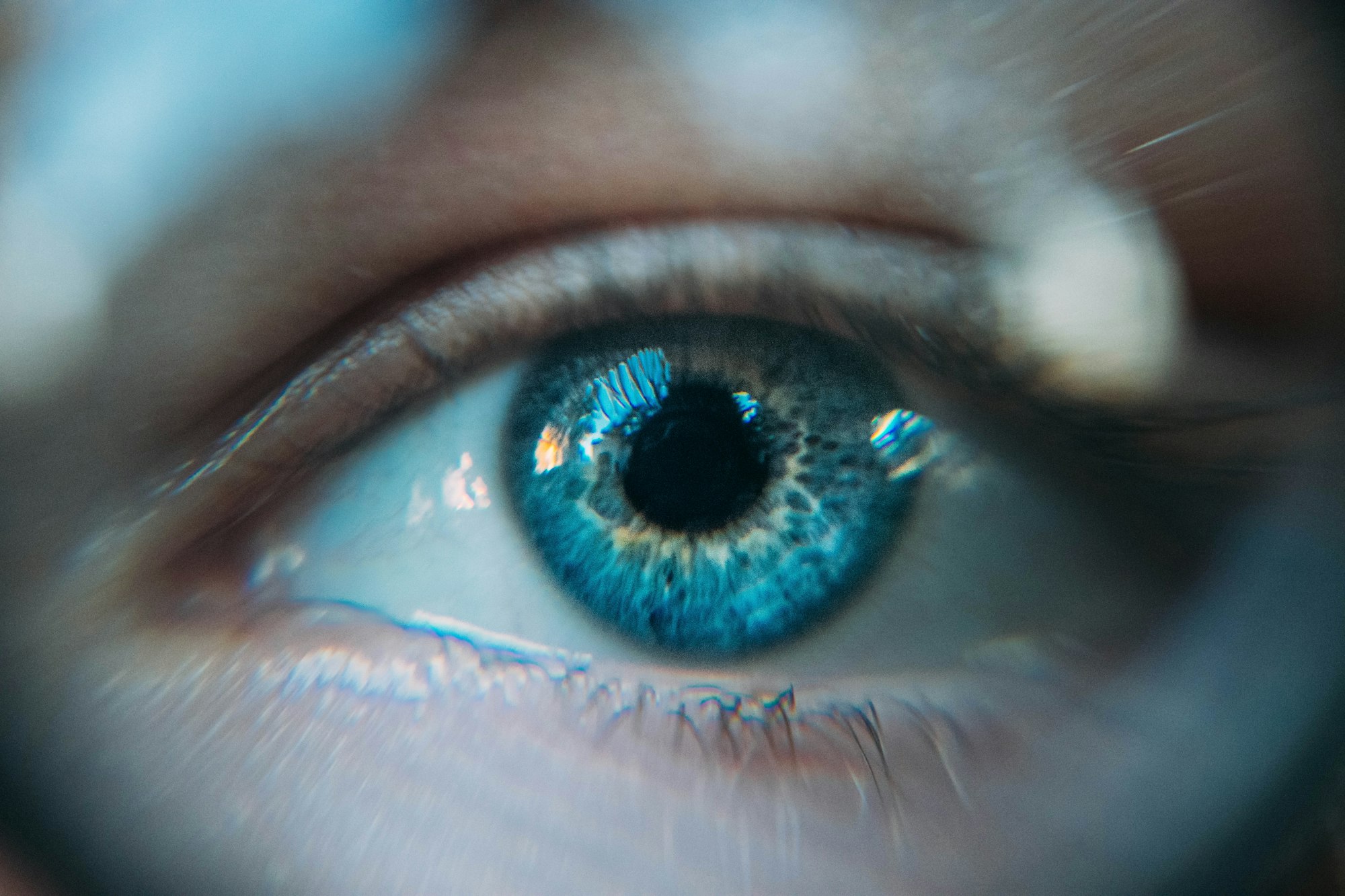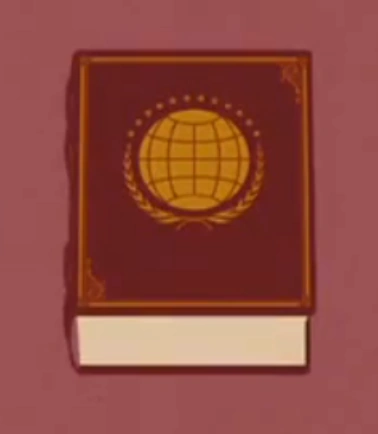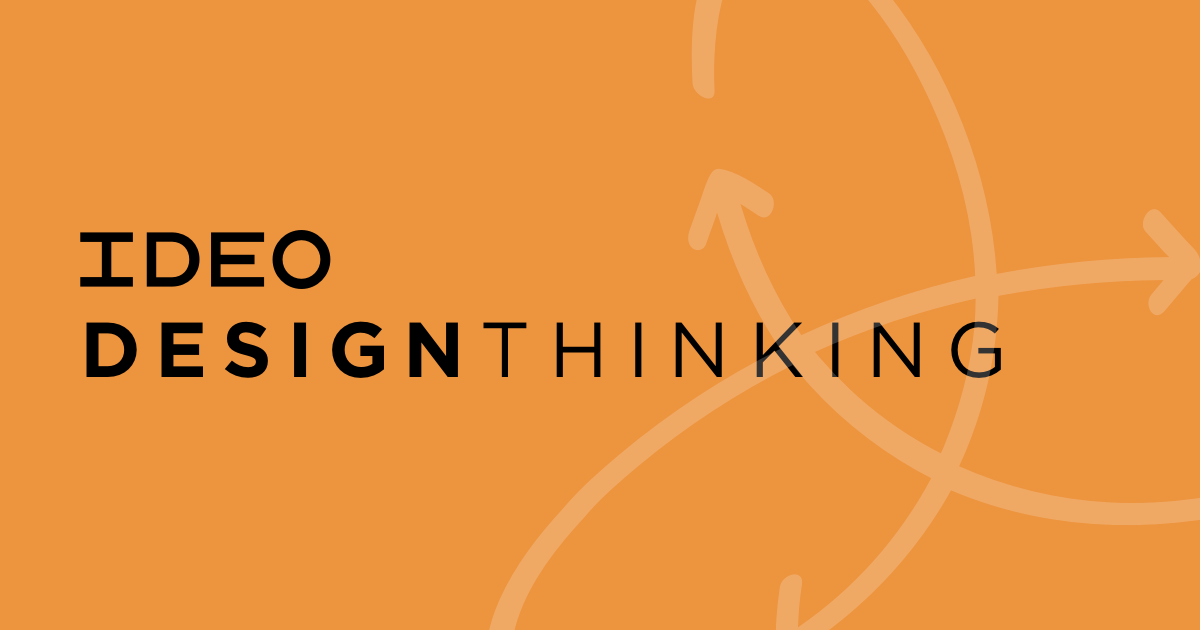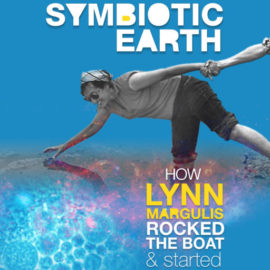How are you awake?
When I was watching the Foundation episode, “Mysteries and Martyrs,” I felt a profound sense of resonance with the character Gaal as she realizes that she is sensing the future before it actually happens.

Spoiler alert: Watch the Foundation series episode, “Mysteries and Martyrs,” before reading this article. The article contains spoilers.
I am psychologically primed to feel this way, having been named for both a prophet (Samuel) and a martyr (Stephen). There have been experiences in my life that seem to confirm the sense that I can think and act locally, and the world seems to respond globally.
Is it psychological priming? Is it confirmation bias? Is it the adjacent possible? Is it nominative determinism? Is it an unconscious awareness of the influence of others? Is there a Zero Point Field that invisibly connects us to each other? Is it a divine messenger? I cannot say.
Like Buckminster Fuller, Guinea Pig B, I am treating my life as an experiment in human experience design. Can I project my intentions into the future and imagine, design, and build my own reality?
My experience is that, as human beings, we all have this ability to recall memories of the past, perceive patterns of awareness in the present, and project intentions and act out scenarios that affect the future, but we cannot always accurately predict the result or what might possibly go wrong. Human beings have discovered that ideas can be spoken into the void, and these ideas take shape, forming reality.
In the sacred text on which I was raised, the origin story begins with a divine fiat, speaking a word into being. “And God said, ‘Let there be light,’ and there was light.”
Now, we learn that there is a relationship between energy, mass, and time.
In the Trimtab Book Club that meets every second Saturday, we are reading through the end of the book, Cosmography. In Cosmography, Buckminster Fuller gives us an articulation of time as an expression of Einstein’s equation:
“Because of my physical-model-proven knowledge of the Einstein model’s transdeformation in a light photon as mc2 = mass times the speed of the spherical surface growth rate of radiation expansion converted into a single tensor.”
(Page 307)
I am relating this conception of time to the tree of life — time, energy, and mass expanding like a growing tree. We have a tendency to visualize time as a line or a vector. This two-dimensional flattening of reality is a poor metaphor for understanding the experience of time. As with a coral reef, forming a structure of calcium carbonate through the process of living, the structure is not the living organism, but it is the environment that it shapes for itself as a substrate for life. This is how the rings of a tree trunk are formed through cycles of growth and dormancy that correspond with the cycle of the seasons. The living cells of a tree are at the outer surface of the trunk, beneath the protective bark of the tree, but surrounding the wooden interior, which is the skeletal supporting structure of the organism.
Similarly, life on Earth is a thin film on the surface of our planet. The present is a moment of awareness at this thin boundary of the expansion of time, energy, and mass radiating from the centre of a sphere, like the inflation of a bubble or a balloon. The history of the universe is the medium inside the sphere, invisible but foundational for all that comes next.
Each event becomes the substrate for the conscious experience of the expansion of time that forms our present awareness. Life is happening on the surface of this expanding quantum sphere.
Now, back to the inherited narrative of the dominant cosmology of our global economic empire.
Given a choice between the tree of life and the tree of the knowledge of good and evil, humans chose to split their understanding of the world into two, rather than accept that life is a unified whole. The separation of the spheres destroys the integrity of the whole. This misconception of reality has extended into a metaphysical split between Eastern and Western hemispheres, which appears to correspond with the cognitive divide between the right and left hemispheres of the brain.
Humans have created a metaphysical world that appears to be an extension of our physical brains. The East and West hemispheres of the Earth appear to represent the cognitive/emotional divide that we are learning about through brain science and cognitive behavioural therapy. Western philosophy is analytical, rational, objective, and disembodied while Eastern philosophy is intuitive, emotional, subjective, and embodied.

Temporal Proprioception
I searched for two words that connect the ability to perceive the passage of time and the ability to perceive the location, movement, and action of parts of the body: temporal proprioception.

When we walk, run, cycle, or drive, we are engaging in a form of temporal proprioception. We are projecting our intentions into the future and anticipating the results as we react to the synthesis of perception stimuli.
The character, Gaal, in the Foundation TV series is realizing the ability to perceive the future before it happens, anticipating problems before they actually happen. This, in fact, is the entire premise of the series. Both science and religion are predicting a new political paradigm precipitated by the inevitable fall of the Galactic Empire. The Foundation is devised as a means of breaking the fall of the empire by preserving the knowledge and skills to rebuild human civilization in the form of an Encyclopedia Galactica.
The Hitchhiker's Guide to the Galaxy
As an aside, Douglas Adams is speculated to have written The Hitchhiker's Guide to the Galaxy as a book-length repository of humour and surrealist absurdism in answer to Isaac Asimov’s reference to an Encyclopedia Galactica.
The Encyclopedia Galactica is a respectable, but on the whole insignificant guide and sells rather less than The Hitchhiker's Guide to the Galaxy. It is also more expensive and older than the Guide. It has also been criticised in some quarters for the lack of friendly advice on the cover, compared to the Guide.

Back to our regularly scheduled programming
I wonder if human beings are born with the ability to feel the future. That seems to be what Buckminster Fuller is referring to when he remarks that:
“Everyone is born a genius, but the process of living de-geniuses them.”
Somehow, Gaal has retained her genius, but only realizes her abilities through a succession of events that pulls her into the centre of the drama that is unfolding throughout the Galactic Empire.
https://screenrant.com/foundation-gaal-future-prediction-powers-prime-numbers-explained/

“I think I can feel the future.”
I heard these words and had a visceral response to the resonance of this experience in my own life. My eyes welled up with tears, because this is what I have been realizing.
I immediately began listening to the official Foundation podcast. It happened again.
Foundation
I think of science and religion being on this scale, and what we know of as classical science at the top of it and classical religion at the top of it. If religion, Judeo-Christian religion, keeps on going more in an Eastern way into Zen Buddhism and Daoism or something like that, and you think of this model like a clock, and it gets down to where 6 o’clock is, and then you think of classical science and you get into particle physics going around the right side. They meet at number 6. There is this point where religion and science become indistinguishable from one another.
The little that I know of quantum mechanics is just so mind-blowing in the way that a particle can exist in more than one space at a time, or that just the act of observing something can alter the outcome. Schroedinger’s cat. It’s all one and the same thing.
The idea that you could have an intention in your mind to want a certain result—that intention could effect the result is just mind-boggling to me.
Even the notion of time dilation blows my mind. The fact that the faster you go, it alters the relative flow of time—which is just crazy!
(3:05)

Hearing these words, I was compelled to transcribe them, to document them and compare them to what I have been exploring and writing about.
If anyone has been following my recent activities, one might notice that I have been using similar ideas as the topics for the World Builders Google Group, where we organize the World Weavers Zoom meetings every second Saturday.
- Group Flow State
- Designing Regenerative Consciousness
- Shifting from an attention economy to an intention economy
The next meeting is on rapid prototyping and worldbuilding.
I wrote an article about the East/West divide in the global science versus religion debate a couple days before the latest Foundation episode was released on Apple TV+ along with its corresponding official Foundation podcast episode.
Carl Jung referred to the subjective experience of seemingly-meaningful coincidences as synchronicity.

Why am I being drawn to watch this particular TV series and to listen to this podcast that is repeating back to me my own ideas? Where are these ideas coming from? Why am I fascinated by quantum mechanics and cognitive science and their connections to metaphysical design?
As a designer, I am trying to reverse engineer the intentions of the design of the universe with whatever clues I have at my disposal and the limited cognitive abilities of my human mind to discern the patterns that might reveal some insights into human perception, cognition, emotion, and action.
The limited frame of the corporate mindset is far too small. I enlarged my frame to the size of the universe, because conventional human-centred design says that such a design problem is too big to consider.

I am so unenthralled by the small-mindedness of corporate managers and executives. Typically, they are the ones standing in the way of innovative thinking and practice. They have little imagination to think outside the box they have created to benefit themselves, because they succeed when they focus on profit. To profit is, by definition, to take more than you give. It is the extraction mindset of corporate religious orthodoxy that blinds them to their enslavement to a system that is built to domesticate them by making them dependent on money, profit, and accumulation of consumer goods and products.
Outside of the box is a spherical Earth that is a self-regulating living system. The Earth is gaining consciousness and we are its limbic system and its prefrontal cortex. We, all the living organisms of the planet, are fulfilling the functions of a complex holobiont, an organism of organisms.
However, corporations have thrown the equilibrium of the living systems of the planet out of balance. To profit is to take more than is necessary to fulfill basic needs. Profit increases the power of the corporation over its subjects. The corporation subjects human populations to its needs, rather than to meet human needs. The means have become the ends. Money is no longer a medium of exchange. Money is the means for making more money.
My thought is that I am not particularly special as a human being. Bucky said the same of himself. There is nothing remarkable about him as a human being. The difference was one of perception. His eyesight was so poor that he compensated by increasing his other faculties of perception. His ability to observe the world with this shift in perception led to uncommon insights.
This is what I find interesting about the Foundation narrative. It explores the themes of power, authority, and belief systems while running scenarios involving conflicts between the various hierarchies and networks of the empire: politics, science, and religion. The political hierarchy relies on the monopoly on violence and technological supremacy to maintain the legitimacy of its power. The scientific establishment relies on knowledge and technological expertise to justify its authority. The religious community relies on a compelling story of origins and destiny to guide shared beliefs around meaning, purpose, and belonging.
The Human Condition
The framing of these narratives assumes that the human condition is immutable. We consider the past to be deterministic and we believe our DNA predetermines a future that is similarly fraught with conflict and violence.
"During the time men live without a common power to keep them all in awe, they are in that conditions called war; and such a war, as if of every man, against every man.
"To this war of every man against every man, this also in consequent; that nothing can be unjust. The notions of right and wrong, justice and injustice have there no place. Where there is no common power, there is no law, where no law, no injustice. Force, and fraud, are in war the cardinal virtues.
"No arts; no letters; no society; and which is worst of all, continual fear, and danger of violent death: and the life of man, solitary, poor, nasty, brutish and short."
— Thomas Hobbes, Leviathan, 1651
However, to believe that the human condition is unchanging is to lose faith in our ability to grow and mature. Such a belief is a conservatism that denies the possibility of progress and falls back on tradition as the means to maintain order, security, and authority in a system that seems to tend toward disorder, uncertainty, and chaos.
This divide between belief systems seems to divide hierarchies and networks. Hierarchies build institutions to preserve traditions believed to be the foundation of civilization. Networks revel in uncertainty, ambiguity, and curiosity as the means to generate creative and innovative solutions to intractable and seemingly unsolvable problems in order to transcend the status quo.
The separations between order and chaos, old and new, traditional and progressive, conservative and liberal are the source of tensions that lead to intergenerational conflicts and wars that stretch back into recorded history and beyond.
Synthesis and Symbiosis
What if Lynn Margulis is right to credit biological evolution to cooperation and symbiosis, that the Earth demonstrates the validity of the Gaia hypothesis, and the Earth is a self-regulating living organism?

The DNA that we thought was deterministic, locking in the probabilities of our future to a narrow range of possibilities, is actually a library of resources that helps us to adapt to the changing environment in order to maintain the resilience and equilibrium of the living systems of the planet.
Interestingly, this is the challenge of our generation, as we awaken to a realization that we have disrupted the global ecology and have modified our living environment to such a degree that we have initiated a sixth mass extinction and changed the global climate.
We have yet to develop the self-control, knowledge, wisdom, and maturity to be granted the power of nuclear fission and geoengineering.
We would not give a toddler a weapon, as the results would likely be disastrous. The young child has not gained the ability to regulate perceptions, thoughts, emotions, and actions to responsibly manage the power of a gun or a knife or a nuclear arsenal.
Although, collectively, the human species is at an early, nascent stage in our growth, development, and maturity, we have been granted the power of nuclear annihilation and ecological destruction.
Awakening
If we are just awakening to our abilities and capacities as a species, we are at a very early stage of self-awareness and self-consciousness in which we are recognizing the consequences of our actions, both intended and unintended, which result in feedback loops in the system. In the process, we are becoming more other-aware and other-conscious. We are engaged in a conversation with our environment, such that we shape our environment and thereafter our environment shapes us. In that conversation, we are learning that we are so integrated into our environment that there really is no distinction. We are not separate from what surrounds us, because we are interdependent and interconnected with all of life around us.
We are awakening to the unity of the universe that defines our existence and experience in reality. The neural pathways of the world are in the process of connecting the divided spheres of consciousness, awareness, and experience.
What are we learning? Who are we becoming? Why are we here?
In asking these questions, we are at the same time asking ourselves, How are we awake?
What gets us up in the morning? How do we meet the day?
We are prompted to ask better questions.
How might we create an environment for exploring our curiosity, influence, capacity, and agency?
As a creative being, I know from experience, we first need to let go of fear. In that way, we have greater capacity to navigate metaphysical gravity, which is love.



